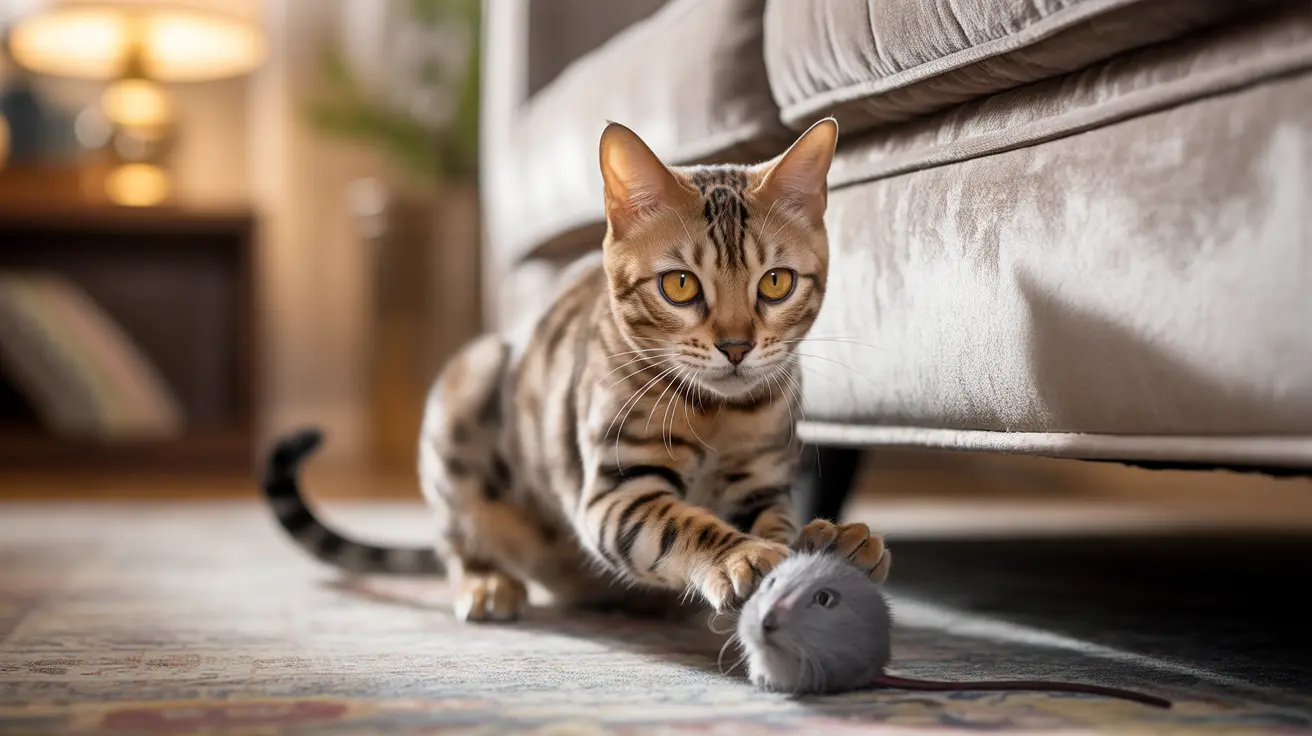If you've ever found your cat's favorite toys tucked away in shoes, under furniture, or even in their food bowl, you're witnessing a fascinating behavior deeply rooted in feline instincts. Cats hiding toys is more than just a quirky habit – it's a complex behavior that reveals much about their wild heritage and psychological needs.
Understanding why cats hide their toys can help us better appreciate our feline companions and ensure we're providing the right environment for their physical and emotional well-being. Let's explore the fascinating reasons behind this common feline behavior.
The Wild Instinct Behind Toy Hiding
At its core, cats hiding toys is directly linked to their ancestral survival instincts. In the wild, cats would hide their prey to prevent other predators from stealing it and to preserve food for later consumption. This "caching" behavior remains hardwired in our domestic cats' DNA, even though they no longer need to hunt for survival.
Your cat's toy mouse or favorite ball represents prey in their mind, triggering these ancient instincts to protect and preserve their "catch." This behavior demonstrates how deeply ingrained their hunting instincts remain, despite thousands of years of domestication.
Protection and Territory Marking
When cats hide their toys, they're often establishing safe zones within their territory. These hiding spots serve multiple purposes:
- Creating secure storage areas for valued possessions
- Marking territory with their scent
- Establishing "hunting grounds" for later play
- Protecting resources from perceived competitors
Maternal Instincts and Play Behavior
Female cats, in particular, may hide toys as part of their maternal instincts. This behavior can be more pronounced in unspayed females or those who have previously had kittens. The toys become surrogate "babies" that need protection and care.
Even male cats engage in this behavior as part of their play routine, using hidden toys to practice their hunting skills through stalking and pouncing. This self-directed play is crucial for maintaining their physical and mental agility.
Understanding Normal vs. Concerning Behavior
While toy hiding is typically normal and healthy, sudden changes in hiding patterns might signal stress or health issues. Watch for these warning signs:
- Excessive or compulsive hiding behavior
- Aggressive protection of hiding spots
- Loss of interest in retrieving hidden toys
- Hiding combined with other behavioral changes
Creating an Enriching Environment
To support your cat's natural hiding instincts, consider these environmental enrichments:
- Provide various types of toys to satisfy different play drives
- Create safe hiding spots around your home
- Rotate toys regularly to maintain interest
- Include interactive play sessions in your daily routine
Frequently Asked Questions
Why does my cat hide its toys in unusual places like shoes or litter boxes?
Cats choose these locations because they're secure, enclosed spaces that feel safe for storing "prey." Shoes and litter boxes also contain strong familiar scents, making them attractive hiding spots for toys.
Is it normal for cats to bury their toys, and what does this behavior mean?
Yes, this is completely normal behavior. Burying toys mimics the wild instinct to cache prey and hide scent trails from other predators. It's a healthy expression of their natural instincts.
How can I tell if my cat's toy hiding is a sign of stress or illness?
Watch for changes in normal hiding patterns, excessive hiding behavior, or accompanying signs like appetite changes, withdrawal, or aggression. These could indicate stress or health issues requiring veterinary attention.
What instincts drive domestic cats to hide and stash their toys?
This behavior is driven by hunting instincts, territorial marking, and resource protection behaviors inherited from their wild ancestors. It helps cats feel secure and in control of their environment.
How can I provide the right environment to support my cat's natural toy hiding and hunting behaviors?
Offer various hiding spots, rotate toys regularly, provide different types of toys, and ensure your cat has safe spaces to engage in natural behaviors. Regular interactive play sessions also help satisfy these instincts.
Final Thoughts
Your cat's toy-hiding behavior is a fascinating window into their wild heritage and complex psychology. By understanding and supporting these natural instincts, you can create an enriching environment that keeps your feline friend happy, healthy, and mentally stimulated.






